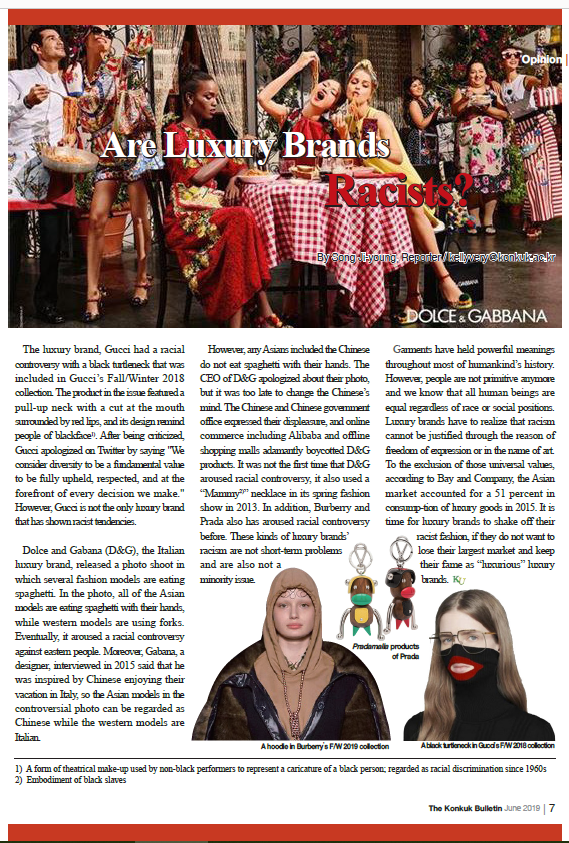
The luxury brand, Gucci had a racial controversy with a black turtleneck that was
included in Gucci’s Fall/Winter 2018 collection. The product in the issue featured a
pull-up neck with a cut at the mouth surrounded by red lips, and its design remind
people of blackface1). After being criticized, Gucci apologized on Twitter by saying "We
consider diversity to be a fundamental value to be fully upheld, respected, and at the
forefront of every decision we make." However, Gucci is not the only luxury brand
that has shown racist tendencies.
Dolce and Gabana (D&G), the Italian luxury brand, released a photo shoot in
which several fashion models are eating spaghetti. In the photo, all of the Asian
models are eating spaghetti with their hands, while western models are using forks.
Eventually, it aroused a racial controversy against eastern people. Moreover, Gabana, a
designer, interviewed in 2015 said that he was inspired by Chinese enjoying their
vacation in Italy, so the Asian models in the controversial photo can be regarded as
Chinese while the western models are Italian.
However, any Asians included the Chinese do not eat spaghetti with their hands. The
CEO of D&G apologized about their photo, but it was too late to change the Chinese’s mind. The Chinese and Chinese government office expressed their displeasure, and online commerce including Alibaba and offline shopping malls adamantly boycotted D&G products. It was not the first time that D&G aroused racial controversy, it also used a "(Mammy2)” necklace in its spring fashion show in 2013. In addition, Burberry and Prada also has aroused racial controversy before. These kinds of luxury brands’ racism are not short-term problems and are also not a minority issue.
Garments have held powerful meanings throughout most of humankind’s history.
However, people are not primitive anymore and we know that all human beings are
equal regardless of race or social positions. Luxury brands have to realize that racism
cannot be justified through the reason of freedom of expression or in the name of art.
To the exclusion of those universal values, according to Bay and Company, the Asian
market accounted for a 51 percent in consumption of luxury goods in 2015. It is time for luxury brands to shake off their racist fashion, if they do not want to lose their largest market and keep their fame as “luxurious” luxury brands.

